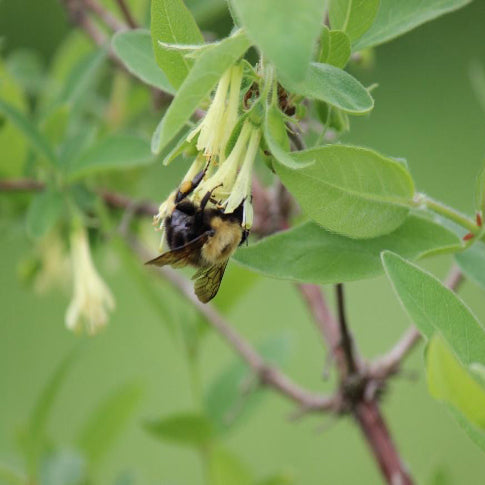Ready to roll up your sleeves and play in the dirt? Growing haskap (also known as honeyberry or by its botanical name Lonicera caerulea), is like nurturing your own piece of an enchanted garden. These plants not only bring a burst of beauty to your backyard but also provide a treasure trove of sweet, tangy berries that are a hit in any health enthusiast’s book. Let’s dig into the nitty-gritty of growing your very own haskap plant.
1. Choosing Your Spot
Haskap plants are not just hardy; they're like the rugged adventurers of the plant world. They thrive in cooler climates and actively crave a bit of chill. First things first, pick a sunny spot in your garden. While these plants can handle partial shade, they’re sun worshippers at heart and love a good six hours of direct sunlight.
2. Preparing the Soil
Haskap plants are pretty low maintenance, but they do appreciate good soil. They prefer well-drained soil with a bit of acidity. If you can get your hands on a soil test kit, aim for a pH between 5.5 and 7. Before planting, mix in some organic matter like compost or peat moss to give them a nutrient-rich start.
3. Planting Your Honeysuckle
When? Spring is your golden window for planting – the soil is waking up, and the frosty evenings are waving goodbye. Dig a hole about twice the width of the root ball of your plant and just as deep. This gives the roots plenty of room to stretch out. Gently tease the roots before planting to encourage them to grow outward. Its easy to forget that pollination is key, so at least one of your bushes should be a ‘pollinator’, allowing bees to easily circulate between bushes.
4. Watering and Mulching
Water is the lifeblood of any plant, and your haskap is no exception. After planting, give it a generous drink to settle the soil. Mulch around the base with bark or straw to keep the moisture in and the weeds out. Keep the soil moist, especially during the first year as your plant gets established. If a healthy crop of berries is your goal, take care to water generously in late spring, early summer.
5. Pruning and Care
Haskap plants are like the free spirits of the garden – they don’t need much pruning. But a little trim every now and then (especially after the third year) can help them maintain a good shape and encourage better fruit production. Snip away any dead or broken branches in the early spring.
6. Harvesting the Bounty
Patience is key! Your Haskap plants will likely start to bear fruit in their second or third year. You’ll know the berries are ready when they turn a deep blue-purple. They tend to ripen all at once, so get your baskets ready for a bountiful harvest. Remember, the birds just love ripe haskap berries, so netting is essential.
7. Winter Care
As the days grow shorter and the nights colder, your Haskap plants will slip into dormancy. They're tough cookies and can withstand frosty conditions, but if you live in an area with severe winters, a layer of winter mulch can help protect the roots.
In Conclusion
Growing haskap / honeysuckle plants is a rewarding endeavour that requires just a bit of care and rewards you with a flourish of foliage and delicious berries. Whether you’re a seasoned gardener or a green-thumbed novice, these plants are a fantastic addition to any garden. So, why not bring a little haskap charm to your outdoor space? Your future self, armed with a bowl of fresh haskap berries, will thank you.
Doubting your green thumb? We already did the work for you with our delicious freeze dried Haskap Berry Powder and Organic Juice. Check it out here!

